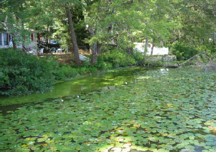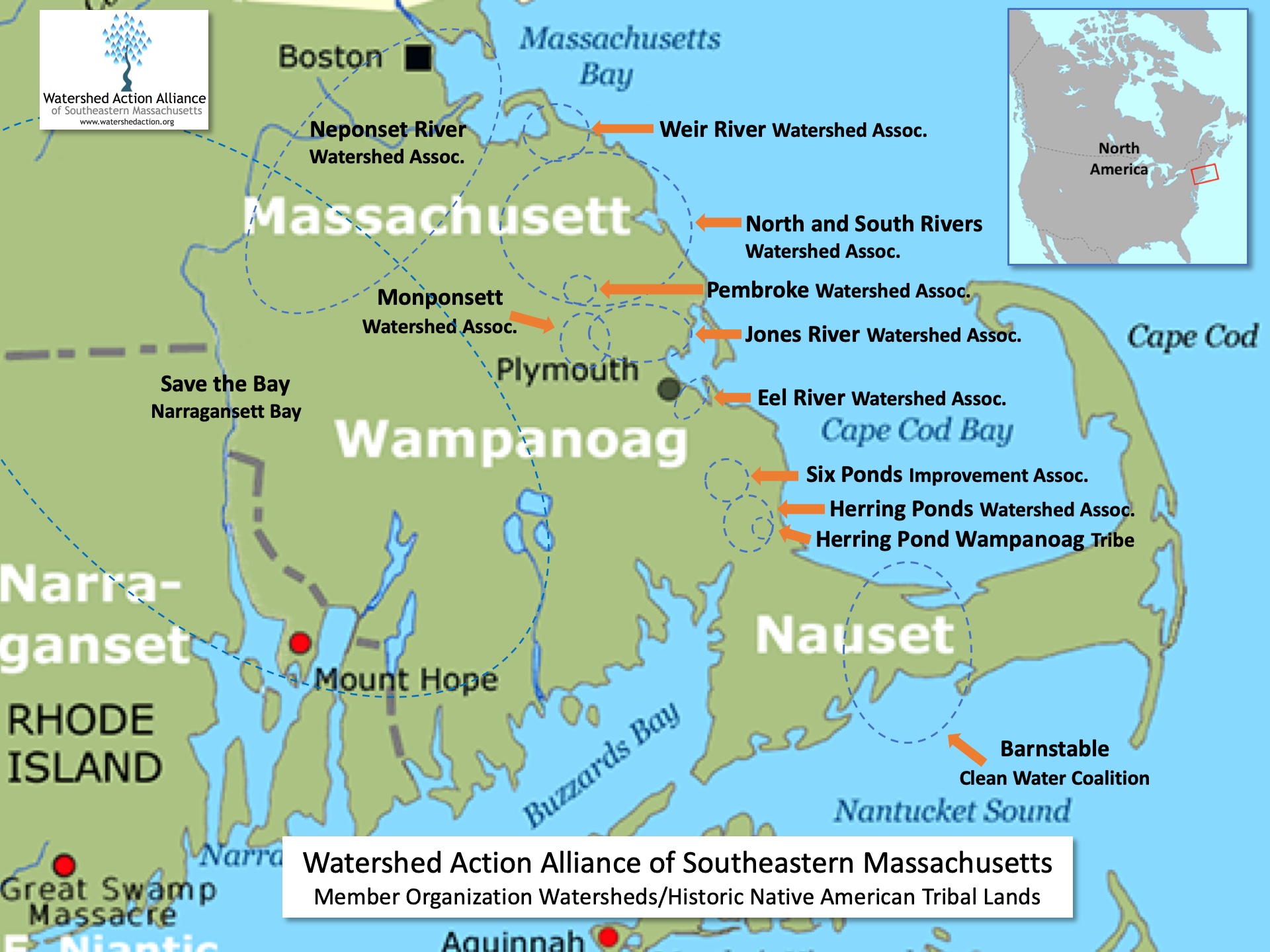Once a natural area is paved or a building is put up, 16 times as much rain runs off into rivers and streams, causing a rapid storm surge and sometimes flooding, instead of gradual replenishment (“recharge”) of groundwater. If adequately recharged, groundwater is slowly but steadily released into rivers and streams over the course of the year. During dry periods, the entire flow of a river may be from groundwater.

Many watershed associations are working to get towns and cities to adopt strong stormwater management bylaws (either as a state requirement or as a local option) and you can help them do this in your town! Talk to your local watershed association about what is happening in your community. Here are the efforts you can ask about:
Encouraging Low Impact Development (LID) and other “Smart Growth” techniques that emphasize.
1) minimizing impervious surfaces such as road widths;
2) keeping natural drainage contours instead of leveling a site before construction;
3) making impervious surfaces drain onto adjacent ground and not into storm sewers;
4) “clustering” houses to maximize natural areas on building lots; and
5) directing stormwater to small water quality treatment areas such as rain gardens located throughout the property. And LID almost always costs less so developers actually like it!
Towns need to:
1) Adopt a municipal stormwater bylaw that applies DEP’s wetland stormwater treatment and groundwater recharge requirements to non-wetland areas (uplands).
2) Amend any existing municipal zoning and other bylaws which discourage Low Impact Development. For example, some towns require unnecessarily wide subdivision roads, mandate connections to storm sewers, ban “cluster” zoning” or treat stormwater treatment swales as “structures” that must be set far back from property lines.
3) Regularly inspect locally permitted projects to make sure stormwater systems are properly operated and maintained. “O&M” should be part of every local stormwater permit.
4) Be sure local rules make redevelopment projects improve currently inadequate stormwater treatment to the maximum extent possible.
5) Establish a “Stormwater Utility,” placing a fee on new development and redevelopment projects to fund munipal stormwater upgrades that will offset the additional stormwater coming from the new development.
6) For existing development: In areas like southeastern Mass that are already fairly densely developed, regulating only new development (and then only if it is located in or near a wetland or floodplain) is not going to get us the groundwater recharge or pollution reduction we need. Requiring proper management of stormwater from existing developments places the costs of stormwater treatment on those who are primarily responsible for it. It also reduces municipal (and thus taxpayer) costs if stormwater from private development is treated before being discharged into municipal storm sewers which must comply with federal water pollution requirements.
7) Require existing malls, stadiums and other sites with lots of paved surfaces to upgrade currently inadequate stormwater systems.
8) Make existing developments properly operate and maintain stormwater management systems.
9) Have adequate funding for their DPW to properly manage stormwater from municipal storm sewers.

